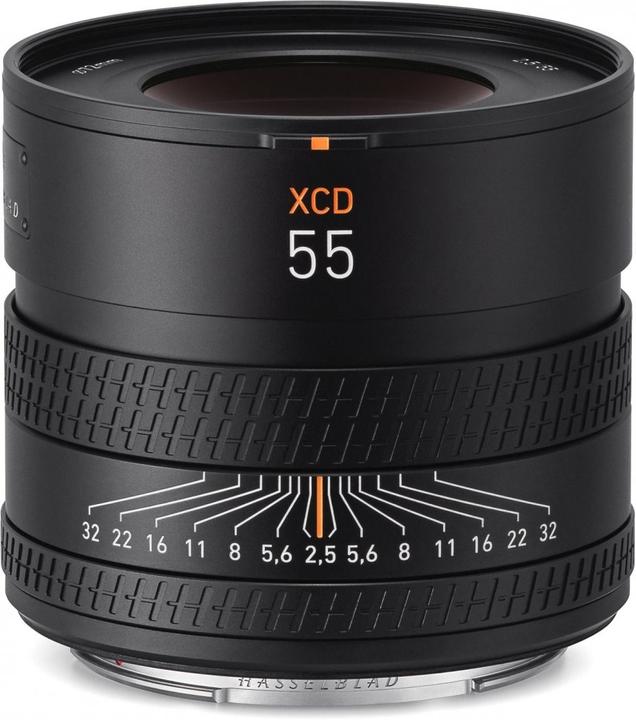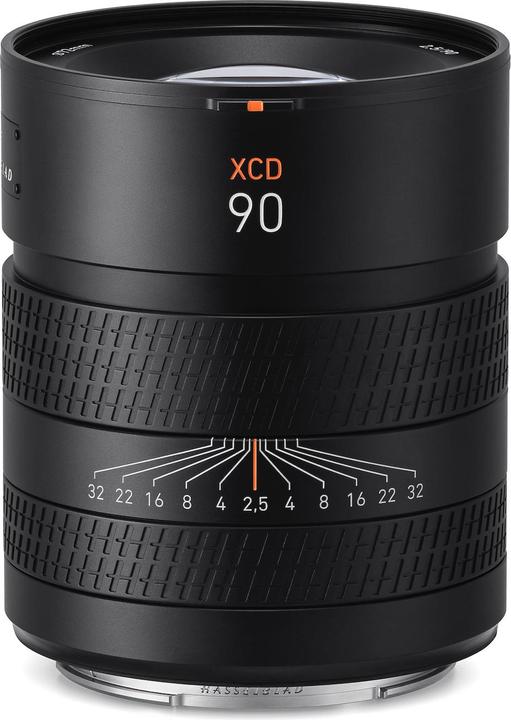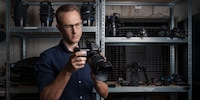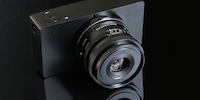
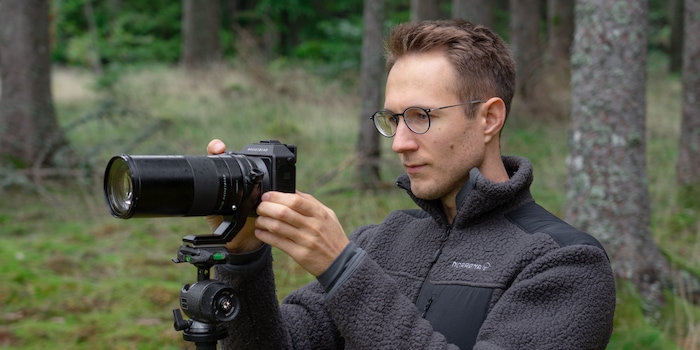
Expensive muse: Hasselblad X2D review
One rainy weekend, I put the 9,000-franc Hasselblad X2D to the test. This medium format camera offers uncompromising image quality. Unlike its predecessor model, the features are also up to date. Yet the target audience remains small.
The Hasselblad X2D 100c is a camera for irrational people. The body alone will set you back 9,000 francs. And you’ll need the same amount again for two of the latest lenses. So what do you get for your dough? A gorgeous, mirrorless, medium format (MF) camera with outstanding image quality. All in all, similar to other systems that boast a large sensor, the exorbitant price isn’t backed up by concrete performance factors. The X2D isn’t perfect. It has weaknesses, and a contemporary full-frame camera works better for a lot of applications. In spite of all of that, I haven’t had as much fun taking photos in ages as I have with the X2D.
Design and specs: the coveted device
This isn’t because I’ve been taken in by the price tag and a name that’s steeped in history. The X2D isn’t my first Hasselblad. I had both of the predecessor models. But I didn’t keep either of them for very long because I got frustrated at their sluggishness. One of the main reasons I wanted them in the first place was their design. Hasselblad’s X cameras are very aesthetically focussed. The new X2D is also the kind of object you fall in love with. I almost involuntarily want to keep picking it up. In terms of materials, the body is made of a solid aluminium block. The feel and finish remind me of current MacBooks.
What follows the initial silver X1D and its grey successor X1D II is the latest iteration in anthracite. And I like it. Only the shutter release has kept its Hasselblad orange colour. The body is a bit bigger in order to accommodate the new image stabiliser. This doesn’t matter to me, as the camera sits perfectly in my hand thanks to the slightly stouter, rubber grip. All of that makes the X2D the best looking and at the same time most comfortable camera on the market at present.
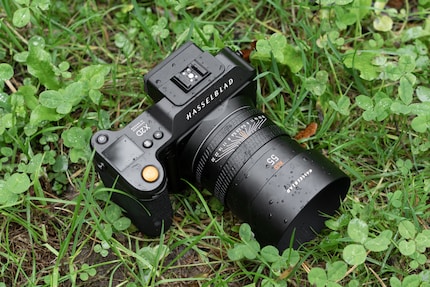
As with all Hasselblad X cameras, the X2D doesn’t have a shutter on the body. Instead, there’s a between-the-lens shutter hidden in all of the lenses. This makes the lenses expensive but presents a crucial advantage when you’re working with flash units. The theoretically shortest sync time is 1/4000 of a second. Nope, that’s not a typo. And no, it’s not the same as high-speed sync. In practice, it’s limited by the flash duration of the flash tubes. And less than 1/1000 of a second isn’t sensible. Nevertheless, it’s an astronomical value compared with conventional cameras. With the latter, your limit is usually 1/200. Without drifting off into a flash tutorial, it’s worth pointing out that if you’re battling against the sun with artificial light, it’s a massive difference.
There’s now a 100-megapixel sensor hidden in the X2D’s compact casing. What’s new are the image stabiliser and a phase-detection autofocus system. Not only that, the viewfinder with huge 1.0x magnification and a 5.76 megapixel resolution are also worth mentioning. The X2D has an internal SSD memory of 1 terabyte, which is sufficient for around 5,000 images. This time, Hasselblad has done away with the video feature altogether. Which is no bad thing, as all their previous attempts were a fiasco. But how does the X2D compare with previous models, you ask? Here are all the key specs of the X2D and its predecessor, the X1D II at a glance:
| Hasselblad X2D 100C | Hasselblad X1D II 50C | |
|---|---|---|
| Sensor | CMOS, 43,8 × 32,9 mm | CMOS, 43,8 × 32,9 mm |
| Resolution | 100 megapixels
11656 × 8742 206 MB of RAW data | 50 megapixels
8272 × 6200 106 MB of RAW data |
| Autofocus | Phase detection
294 points | Contrast detection
117points |
| Image stabilisation | 5 axes in-body
up to 7 f-stops | – |
| ISO range | 64-25600 | 100-25600 |
| Touch display | 3.6-inch TFT (adjustable)
2.36 million pixels | 3.6-inch TFT
2.36 million pixels |
| Viewfinder | 5.76 million pixels
100% coverage 1,0x magnification | 3.69 million pixels
100% coverage 0.87x magnification |
| Shutter | Leaf shutter in the lens
Up to 1/4000 of a second mechanically | Leaf shutter in the lens
Up to 1/2000 of a second mechanically |
| Flash synchronization | Up to 1/4000 of a second | Up to 1/2000 of a second |
| Storage | 1 TB internal SSD
1 × CFexpress Type B | 2 × UHS-II SD |
| Battery | 3400 mAh / 420 captures | 3400 mAh / unknown |
| Dimensions | 148,5 × 106 × 74,5 mm
895 g (battery included) | 148 × 97 × 70 mm
766 g (battery included) |
Operation: (too) simple and easy
There are fewer buttons on the X2D than on other cameras. Just the on button, ISO/white balance, mode selection, AE lock, AF-on and shutter release. Add to that two wheels for the aperture and shutter speed as well as four buttons for controlling playback and menu. And that’s it. I can alter other settings using the touchscreen and the incredibly clear menu. I love the fact that the X2D has pared it down to the essentials. Compared with my Sony A1, it feels more like a camera and less like a computer. As a result, I spend less time trying to find the optimal settings and more time concentrating on creative decisions.
Having said that, in certain points, the radical cutback has gone too far for my taste. For instance, without a thumb joystick, I have to move the focal point using the touchscreen or the two rotary wheels (up/down, left/right). The first option is fiddly and imprecise, while the second is way too cumbersome. It’s even worse if your finger or the camera is wet. That’s when the touchscreen sometimes doesn’t react at all or responds incorrectly. Why Hasselblad obstinately dispensed with the joystick is something I can’t understand given their interest in aesthetics. Especially as moving the focal point is one of the features needed most often. All the same, the X2D is otherwise unaffected by rain and works flawlessly. However, it doesn’t have an IP certification, which seems inexcusable to me for a camera in this price range.
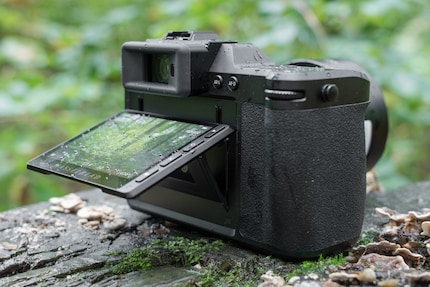
On a positive note, there’s good news to report on the image stabiliser. For a start, the fact that it even exists in such a small case with a sensor that big is noteworthy. It finally transforms the X2D into what the previous model always wanted to be but never managed due to tripod constraints, namely a nimble medium format system. Hasselblad promises that the stabiliser reduces blurring by 7 f-stops. Whether this value is accurate or not isn’t something that I can check. In practice, images with relatively long exposure times are also sharp. On a rainy day in the forest, I can shoot handheld photographs with ISO 100 – that would’ve been out of the question with the non-stabilised X1D. During testing, the battery life isn’t anything to write home about, but it’s alright. In one day, I go through the whole of the first battery and half of the second. The batteries are backwards compatible with both predecessor models.

Display and viewfinder: nice, as well as nice and big
Likewise, I don’t have anything to complain about when it comes to the screens. That’s screens plural because the X2D now comes with a top-of-the-range display, which shows the most important parameters, such as the aperture, shutter speed, ISO and battery level. It’s bright, clear and sharp. I can get over the fact that the elegant, flush mode wheel had to disappear to make way for this. Even the screen on the back is good. You can now incline it, but it’s not turnable. At 3.6 inches, it’s bigger than the display on most other cameras. What’s more, the 2.36-million pixel resolution is up to date. While all of that doesn’t have a direct impact on image quality, I notice time and again how much more fun it is to shoot when the images look great on the camera screen.
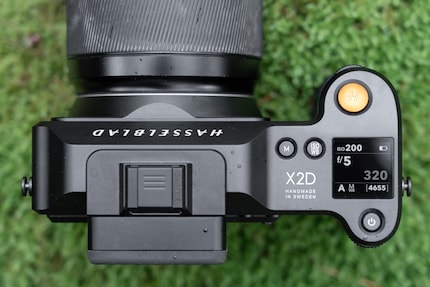
Swedish company Hasselblad has considerably improved the electronic viewfinder compared with that on the previous model. The 60 images per second frame rate is good; the 5.76-megapixel resolution is very good, and the 1.0 zoom is outstanding. I’d say the only fly in the ointment is the sometimes unreliable proximity sensor, which allows the X2D to switch between its back display and viewfinder.
Autofocus: better but still slow
The major weakness in all Hasselblad cameras was always the autofocus. Both predecessors to the X2D took so long to focus that it hurt. Compared with the modern full-frame systems, they seemed to be stuck in the dark ages. That’s the main reason I never kept the X1D and X1D II. As someone who’s been burnt with these issues before, I was understandably sceptical when Hasselblad made big promises about the new phased autofocus system at the time of the X2D launch.
What can the X2D autofocus do in practice? The short answer: with the right lenses, it can do more than it used to, but for a lot of applications, it’s still not enough. The long answer: with three new V-line lenses, the X2D now finally focuses at a satisfactory speed. Admittedly, the focus often overshoots the mark and has to be corrected until it’s in the right place. But thanks to the faster and quieter motors, it’s quick work. The focus is also reliable, even in subpar lighting conditions. And that’s not the case with previous generation lenses. When you use those, it feels like it takes ages for them to focus. For one thing, that’s disappointing if you’ve already invested in the X system because you don’t want to replace existing lenses again. Secondly, the choice of lenses with the new design is as yet tiny.
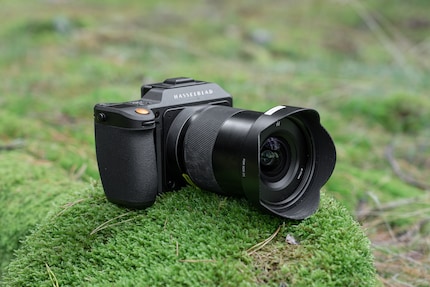
What’s also missing is any kind of automatic mode. The X2D always focuses using one single focal point. This can be moved all the way into the corners. But as I’ve already explained, I find doing that a disaster. Hasselblad announced automatic face recognition with eye tracking. But anyone who knows this Swedish brand can vouch for the fact that any amount of time can elapse between the announcement and launch. And even if the camera does feature tracking, I don’t think it’ll come close to the Sony, Canon or Nikon systems. While its competitor, Fujifilm GFX 100S, might not be a match for those systems, it does already boast eye tracking, rather than it just being a pie in the sky.
In its current state, autofocus on the X2D is perfectly sufficient for applications such as landscape photography. And with the V lenses, it’s also finally fast enough for portraits. However, until the promised eye tracking comes along, the individual focal point remains a handicap. The X2D will probably never be the right camera for everything that moves.
Image quality: more is more
Image quality is the X2D’s core strength. To put it mildly, it’s unbelievably good – in every possible way. From colour to dynamic range, noise behaviour and resolution. That’s primarily down to the superb sensor. Although it’s not yet been officially confirmed, it’s highly likely to be the same as in the Fujifilm GFX 100S. At 43.8 × 32.9 mm, the sensor almost boasts 70% more surface area than a full-frame and a 4:3 aspect ratio. I find this a lot more pleasant to use than the 3:2 ratio in most other cameras, especially in portrait mode. The sensor resolves at almost 102 megapixels. That’s only advantageous if the lenses are also appropriately high-quality, as is the case with Hasselblad across the board. The image processor spices data up with «Natural Color Solution», a proprietary colour profile. The result is 200 megabytes of RAW files.
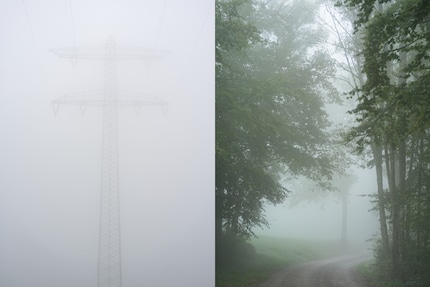
What does this all mean when you take it outside the lab? The first thing I notice when I look at an image is that the colours are correct right off the bat. I realise that’s not a scientific statement. How we perceive colours isn’t objective. Instead, it depends on a myriad of factors and it’s still a matter of taste. But I’m sticking with it. Subjectively speaking, the X2D captures the world exactly as I see it. While I have to spend ages in Lightroom fiddling around with controls with photos from other cameras, I like the pictures from the X2D straight away. The difference goes way beyond simple factors such as white balance or saturation. It’s more a question of things like natural skin tones and at the same time accurate rendering of other colours. Or the beautifully soft transitions from dark to light areas. All of that means I don’t need to spend a lot of time developing pictures with the X2D. Which is a relief.

The files are best suited to more in-depth picture editing. Hasselblad mentions 15 f-stops of dynamic range, although I don’t have a way of testing that. But what’s clear is that I can apparently still save burnt out image areas and find details in deep shadows. There actually seems to be more room for manoeuvre than on my Sony A1, which also boasts a dynamic range.
The X2D’s excellent noise behaviour also does its bit. In spite of the high resolution, the images are unusually clean, notwithstanding strong brightening or high ISO values – even in 100% view. If I scale the photos down to the size of the Sony A1 in order to get a comparison, the difference is striking.
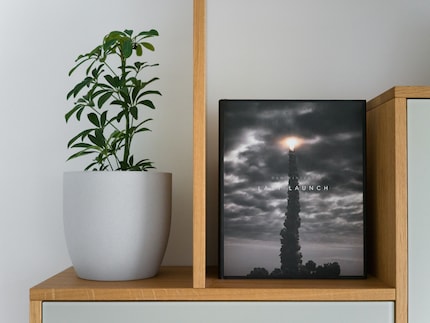
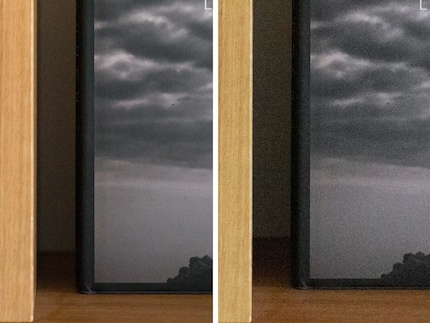
What I think is impressive but least important is the X2D’s headline feature: the 100-megapixel resolution shows very fine detail and allows generous cuts. As a test, I shoot a photo of an oil painting. It’s fascinating to see how much I can zoom in. In 100% view, I can detect individual fibres on the canvas. But that’s pixel-peeping in its purest form. In order to notice something like that in real life, I’d need to use a fine art printer to get almost wall-sized hard copies, which I’d never do.

Price-performance ratio: the Rolex of cameras
The new Hasselblad is like a luxury watch. A Rolex Submariner is waterproof to 300 metres, but its natural habitat is more parade ground than seabed. People who buy them are rarely divers and, in fact, they’re more likely paying for the aesthetic, the good feeling and the brand’s history. It’s hard to substantiate this with concrete facts. Because when it comes down to it, a Swatch can deliver 99% of the performance in everyday activities for a fraction of the price. By contrast, if you compare the Rolex to an even more expensive Patek Philippe, it seems like a bargain.
The same applies to the X2D: compared with most full-frame cameras, it seems ridiculously expensive. The image quality is admittedly much better, but you hardly notice the difference in the end result. And depending on the application, the focal system can be a hurdle when it comes to shooting that you don’t get with other brands any more. But compared with a large medium format camera, such as the Phase One IQ4 150 (site in German) for about 50,000 francs, the opposite is true. All of a sudden, the mirrorless Hasselblad’s image quality is only marginally inferior and the camera packs in more features for a fraction of the cost.
It’s hard to gauge the X2D’s price-performance ratio by virtue of the different reference points. The fact remains that Fujifilm’s GFX 100S gives you the same image performance for two thirds of the price and, at the moment, it features a better autofocus. However, it lacks a between-the-lens shutter and its flash sync speed is 1/125 of a second, which can either be fatal or irrelevant depending on the application. It’s also true that the look and feel of the Hasselblad alone are enough to make me enjoy taking photos with it. How much is that feeling worth? It’s impossible to say.

Verdict: a costly muse
The Hasselblad X2D is a camera for artists and anyone who wishes they were one. Its excellent design and the decision to pare back to the essentials ignite enthusiasm for photography. In this design, Swedish manufacturer Hasselblad has eliminated all the frustrations I had with predecessor models. And the X system has finally joined the modern era. The image stabiliser lets me take good shots without a tripod even when there’s not a lot of light. Meanwhile, the electronic viewfinder is large and high-resolution. As for the internal memory, it’s a welcome addition. Only the focus and the way of using it remain weak points. That being said, the camera does focus more quickly with the new V lenses, and it’ll hopefully soon get face recognition. But for taking shots of anything that moves, the X2D is simply the wrong kind of camera.
What’s beyond any doubt is the image quality. The photos from the medium format sensor are brimming with detail, boast dynamic reserves by the bucketful and feature little noise even at high ISO values. Then there are the fantastic, natural-looking colours, which barely need any manipulation in image processing. For me, it’s this last aspect and the between-the-lens shutter that set the Hasselblad apart, even from its competitor Fujifilm’s GFX 100S.
All in all, the X2D appeals to a small target audience, but all the more reason they’re likely to be even more satisfied with the device. If you don’t mind burning a hole in your pocket to buy a camera, this is one I can recommend for applications such as landscape, product and portrait photography. For your buck, you’ll get a gorgeous, compact, medium format camera with uncompromising image quality that’s bound to inspire you. You could call it an expensive muse.
My fingerprint often changes so drastically that my MacBook doesn't recognise it anymore. The reason? If I'm not clinging to a monitor or camera, I'm probably clinging to a rockface by the tips of my fingers.
